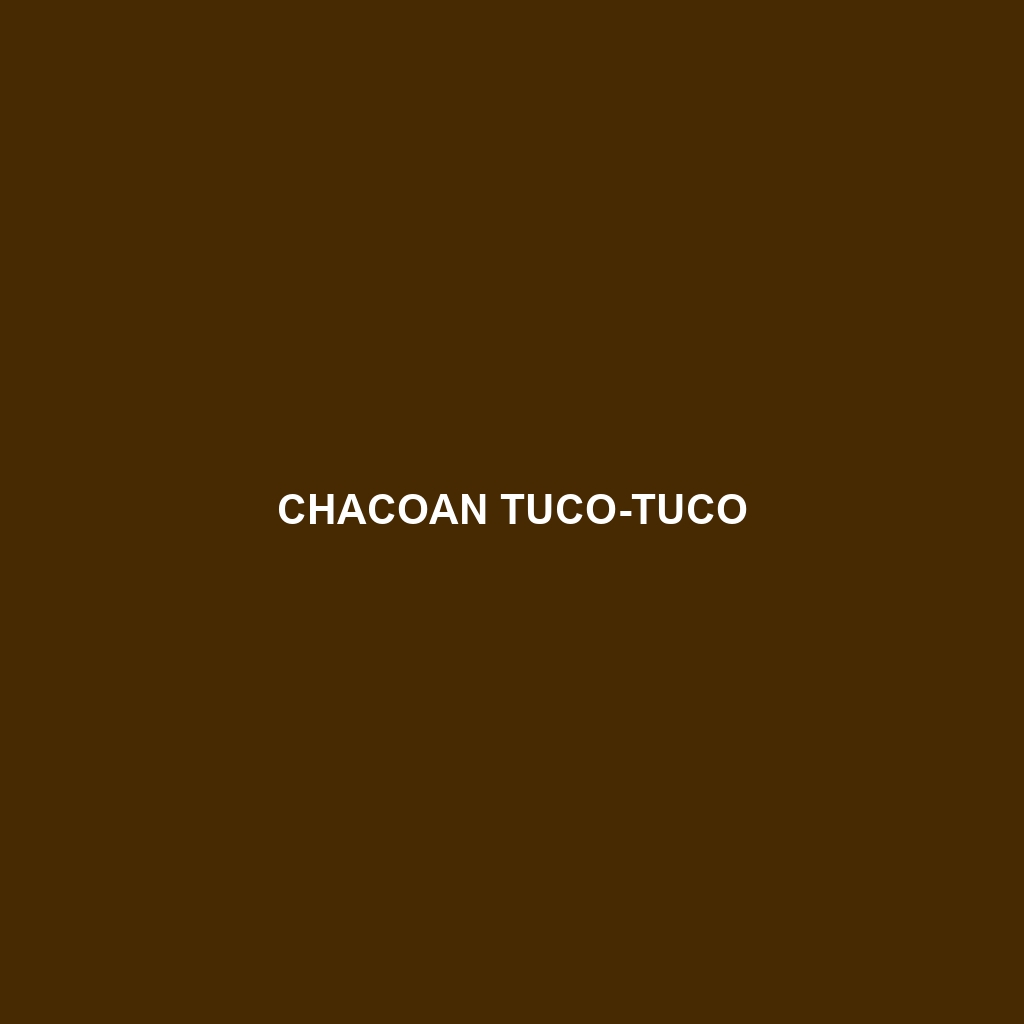Chacoan Tuco-tuco
Common Name: Chacoan Tuco-tuco
Scientific Name: Ctenomys haigi
Habitat
The Chacoan Tuco-tuco is primarily indigenous to the arid regions of the Gran Chaco, which spans parts of northern Argentina, Paraguay, and Bolivia. This mammal thrives within dry grasslands and semi-arid scrublands where it excavates extensive burrow systems that protect it from predators and harsh environmental conditions.
Physical Characteristics
The Chacoan Tuco-tuco is a medium-sized rodent, typically measuring between 20 to 30 centimeters in length. Its fur is coarse and predominantly brown or gray, which provides excellent camouflage against the sandy soils of its habitat. This species is characterized by its stocky body, short legs, and robust, rounded head with large front teeth that are well-adapted for digging.
Behavior
This species is primarily nocturnal, displaying a range of burrowing behaviors that include creating complex tunnel systems. The Chacoan Tuco-tuco is known for its social structures, often living in small colonies. Communication among individuals typically involves vocalizations and scent marking, which are essential for maintaining territory and social bonds.
Diet
Chacoan Tuco-tucos are herbivorous rodents that primarily feed on roots, tubers, and grasses. They have specialized teeth that allow them to gnaw through tough plant materials, supporting their diet rich in fibrous vegetation. Their foraging strategies often involve foraging close to their burrows to minimize exposure to predators.
Reproduction
The breeding season for the Chacoan Tuco-tuco usually occurs during the warmer months. Females typically give birth to a litter of 2 to 5 offspring after a gestation period of approximately 90 days. Newborns are altricial, relying heavily on their mothers for nourishment and protection during the early stages of life. Observations suggest that parental care is shared within social groups, enhancing the survival rate of juvenile tuco-tucos.
Conservation Status
According to the IUCN Red List, the Chacoan Tuco-tuco is classified as vulnerable due to habitat destruction caused by agriculture and urbanization. Conservation efforts are crucial for ensuring the survival of this unique species, particularly in areas where its natural habitat is rapidly disappearing.
Interesting Facts
One fascinating aspect of the Chacoan Tuco-tuco is its ability to dig extensive burrows that can reach up to 1 meter in depth. These burrows serve as both a living space and a strategic retreat from predators. Moreover, this species has relatively few natural enemies, allowing it to thrive in its specific ecological niche.
Role in Ecosystem
The Chacoan Tuco-tuco plays a significant role in its ecosystem by contributing to soil aeration and nutrient cycling through its burrowing activities. Its foraging habits help disperse seeds and promote plant diversity, making it an integral species for maintaining the ecological balance within the Gran Chaco biome.
